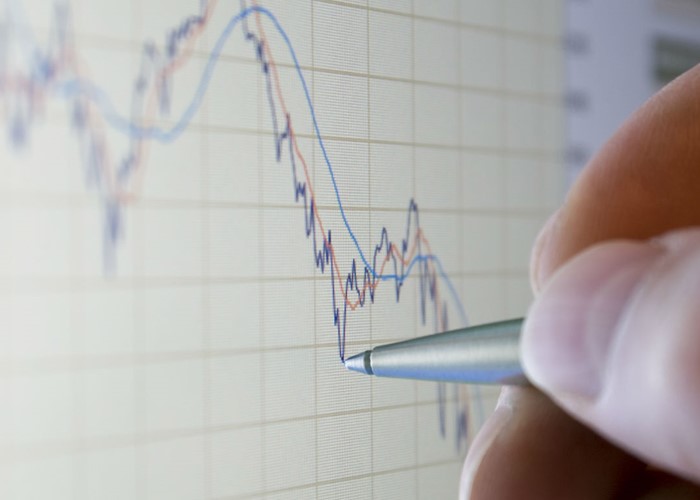CAPE ratio warning of a US market crash

A renowned market tool is at a level not seen since the dotcom crash.
The CAPE ratio, a renowned stock market measurement, is indicating a US stock market crash is coming. And if that happens it will be bad news for markets over here too.
What is the CAPE ratio?
The CAPE (short for 'cyclically adjusted price/earnings') ratio is the creation of Professor Robert Shiller, a renowned economist and stock market commentator who has won the Nobel Memorial Prize in Economic Sciences.
Most ratios used to gauge the relative attractiveness of shares rely on figures that go back at most one year. In the boom years before crashes, these valuation measures become increasingly less reliable, making them poor indicators of coming crises.
The CAPE ratio takes current share prices and then divides them by the average of ten years of earnings, adjusted for inflation. By 'smoothing out' using a decade of earnings, Professor Shiller argues that his CAPE ratio is a better predictor of future returns from shares over the long term.
When the CAPE ratio is unusually high, this indicates muted future returns from stocks. Likewise, when this ratio is below its long-term average, it may be a good time to buy shares.
Professor Shiller originally applied the CAPE ratio to the US Standard & Poor's 500 index and its members. It has since been used to analyse other market indices worldwide.
What's more, although Professor Shiller never intended CAPE to be an indicator of forthcoming market crashes, he used it to accurately foresee the post-1999 dotcom meltdown in global share prices.
1929, 2000, 2007... and 2014?
At a finance conference earlier this month in Switzerland, Professor Shiller warned that US stocks currently look fairly expensive, since the CAPE ratio for the S&P 500 has surged above its long-term average.
He warns that the CAPE ratio for the broader American market presently stands at around 26.3. Since 1881, this ratio has been higher than its current level only three times in history: in 1929, 2000 and 2007.
All three dates are very significant: the great Wall Street Crash began in October 1929; March 2000 saw the peak of the dotcom boom, followed by market meltdowns; while 2007 was the beginning of the global financial crash that took our financial system to the very brink.
So US investors should be wary, if not outright afraid. Then again, Professor Shiller is quoted as saying: "But that's only three observations, so I don't say that it necessarily has to do the same thing, but it is cause for concern."
When America sneezes, Britain catches a cold
In contrast, Professor Shiller reckons UK stocks look reasonably priced. The London market's CAPE ratio is around 13.5, versus its long-term average of 16. In historical terms, UK-listed shares are by no means expensive and far from bubble levels.
However, national economies and stock markets do not exist in a vacuum. America has the both largest economy and the biggest stock market in the world by a long way, so troubles in the US tend to have a knock-on effect here.
History shows that when stocks start plunging on Wall Street (as happened in 1929, 2000 and 2007), London-listed shares soon start plummeting, too.
In other words, even if you don't have a penny invested in American businesses, and allocate none of your portfolio to US funds, a 100% UK-invested 'patriotic' portfolio will still suffer sizeable falls if (or when) Wall Street crashes.
How to cope with crashes
Here are four ways that you can reduce the risk of share slumps or full-blown crashes hitting them hard.
Stop buying pricey shares
History suggests that buying shares when Professor Shiller's CAPE ratio is in the mid-to-high twenties is a sure-fire recipe for poor returns over the next decade. Therefore, now is probably not the best time to jump aboard a bull market that has already been running for more than five years.
Rebalance your portfolio
When one asset class becomes too pricey, as US shares may be right now, professional investors rebalance their portfolios. This involves selling overpriced assets to invest the money elsewhere, such as in bonds, property or good old cash.
If your personal wealth consists of more than, say, 60% in shares, then it might be time for some rebalancing.
Sell shares for tax purposes
With prices riding high, now might be a good time to bank some gains by selling shares. You can also do this sensibly for tax purposes to take advantage of your capital gains tax allowance, which is £11,000 in 2014/15.
Sit it out safely in cash
If you're really worried about a market meltdown, then moving a large slice of your wealth into cash might help you sleep at night. This is a radical step, but it will give you peace of mind when turbulent times are upon us again.
What's more, it worked extremely well in 1929, 2000 and 2007.
Comments
Do you want to comment on this article? You need to be signed in for this feature